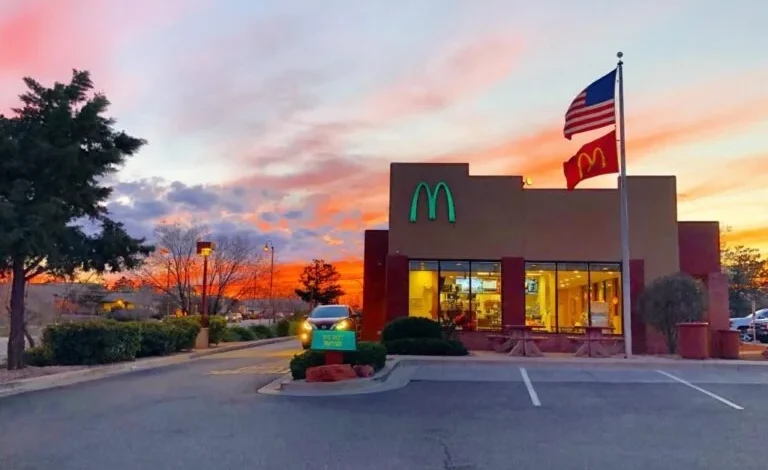“The Intriguing Story Behind McDonald’s Unique Turquoise Arches”
Nestled amidst the stunning red mountains of the Southwest, Sedona is renowned for its natural beauty and attractions like Slide Rock Park. However, one of its most intriguing features is the unique turquoise arches of McDonald’s, a deviation from the chain’s traditional red and gold color scheme. This change might seem curious, but it actually has a simple and understandable reason.
Founded by Richard and Maurice McDonald in 1940 in San Bernardino, California, McDonald’s initially served BBQ before evolving into a popular fast-food burger and milkshake destination. Today, it stands as one of the largest fast-food chains globally, with locations spanning nearly 120 countries. The brand is famously recognized by its golden arches and vibrant red and gold color palette. Yet, visitors to Sedona might notice a departure from this norm in the local McDonald’s arches.

The McDonald’s arches in Sedona, Arizona, stand out with their distinctive turquoise hue, a departure from the traditional golden arches seen elsewhere. This unique color choice holds deep significance in the Southwest region, echoing the rich cultural heritage of the area.
Turquoise has been revered by the native peoples of the Southwest for over a millennium, symbolizing concepts like “Mother Earth” and “Skystone.” Its vibrant greens and blues evoke connections to both the sky and water, embodying the essence of the desert landscape. As a cherished material for jewelry making and a symbol of spiritual significance, turquoise continues to inspire art and architecture throughout the Southwest.
The desert surroundings of Sedona, with its vast expanses and mineral-rich compositions, contribute to a stunning palette of earthy tones like tans, reds, oranges, and pinks. This natural tapestry serves as a muse for the region’s architectural styles, with many cities enforcing strict building codes to ensure harmony with the desert aesthetic.
When McDonald’s introduced its first location in Sedona in 1993, city officials sought to maintain this aesthetic cohesion. Concerned that the traditional golden arches would clash with the desert palette, they mandated a unique turquoise hue for the McDonald’s arches, seamlessly integrating the iconic symbol into the local landscape.
Sedona’s McDonald’s arches are just one example of the Southwest’s penchant for unique and quirky attractions. From Tombstone, Arizona, with its Wild West charm, to Roswell, New Mexico, known for its UFO lore, the region boasts a diverse array of destinations that capture the imagination of visitors.
Despite its global presence, McDonald’s embraces local culture and creativity in its design approach. From repurposed historic buildings to themed structures that reflect the character of their surroundings, McDonald’s locations across the country showcase the brand’s commitment to blending in seamlessly with the communities they serve. Whether it’s a mansion-turned-restaurant in New York or a sprawling entertainment complex in Florida, each McDonald’s location tells a unique story that resonates with its local audience.




